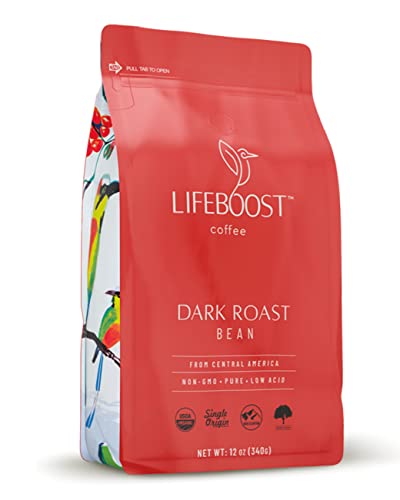Whether you are a coffee connoisseur seeking unique single-origin beans or a brewing enthusiast looking for the perfect blend, this guide will equip you with the tools to find whole coffee beans that suit your preferences.
Roast Level
The roast level determines the depth and intensity of flavor in your coffee. Light roasts preserve the beans' original flavors, while medium roasts strike a balance between flavor and body. Dark roasts offer a rich, bold taste with prominent smoky notes. Choose a roast level that aligns with your preferences.
Bean Origin
The geographic location where the coffee beans are grown significantly impacts the flavor profile. Different countries and regions produce distinct flavors, influenced by factors like climate, altitude, and soil conditions. Explore various origins such as Ethiopia, Colombia, Brazil, or Costa Rica to experience diverse taste experiences.
Flavor Profile
Each coffee has its unique flavor profile, which can include notes of fruits, chocolate, nuts, spices, or floral undertones. Consider your preferred taste preferences and experiment with different flavor profiles to find your favorite.
Freshness
Freshness is crucial for a flavorful coffee experience. Look for whole-bean coffee with a roast date printed on the packaging. Opt for beans roasted within the last few weeks to ensure you're enjoying the freshest flavors.
Organic or Conventional
Choose between organic and conventional coffee based on your preference for certified organic farming practices. Organic coffee is grown without synthetic pesticides or fertilizers, promoting environmental sustainability.
Fair Trade or Direct Trade
Consider supporting fair trade or direct trade coffee, which ensures that farmers receive fair compensation for their efforts. Fair trade focuses on improving working conditions and community development, while direct trade establishes a direct relationship between farmers and buyers, fostering transparency and fair pricing.
Specialty Grade or Commercial Grade
Specialty-grade coffee signifies exceptional quality, carefully cultivated, and processed to meet specific standards. Commercial-grade coffee is more commonly found in mass-produced brands. Specialty-grade coffee often offers better flavor and aroma.
Sourcing Transparency
Look for brands that prioritize transparency in their sourcing practices. They should provide information about the farms and cooperatives they work with, highlighting their commitment to sustainability and ethical sourcing.
Packaging Quality
Choose whole-bean coffee packaged in airtight bags with one-way valves. This helps preserve freshness by allowing gases to escape while preventing oxygen from entering, ensuring the beans stay flavorful for longer.
Single-Origin or Blend
Single-origin coffees are sourced from a specific region or farm, offering distinct flavors unique to that location. Blends combine beans from different origins to create a balanced and consistent flavor profile. Decide if you prefer the depth of single-origin or the consistency of blends.
Acidity Level
Acidity in coffee refers to its brightness and tanginess. Some prefer coffees with higher acidity, offering a zesty and refreshing taste, while others prefer lower acidity for a smoother and milder cup. Consider your personal preferences when choosing the acidity level.
Sustainable Farming Practices
Support sustainable coffee farming by choosing brands that prioritize environmentally friendly practices. These may include shade-grown coffee, water conservation, and regenerative farming methods.
Certification
Certifications like Rainforest Alliance, UTZ, or Fair Trade ensure that specific social, environmental, and economic standards are met. Look for these certifications to support responsible and ethical coffee production.
Price
Consider your budget when choosing whole-bean coffee. While higher-priced options often indicate superior quality, there are also affordable options that offer excellent flavor and freshness.







